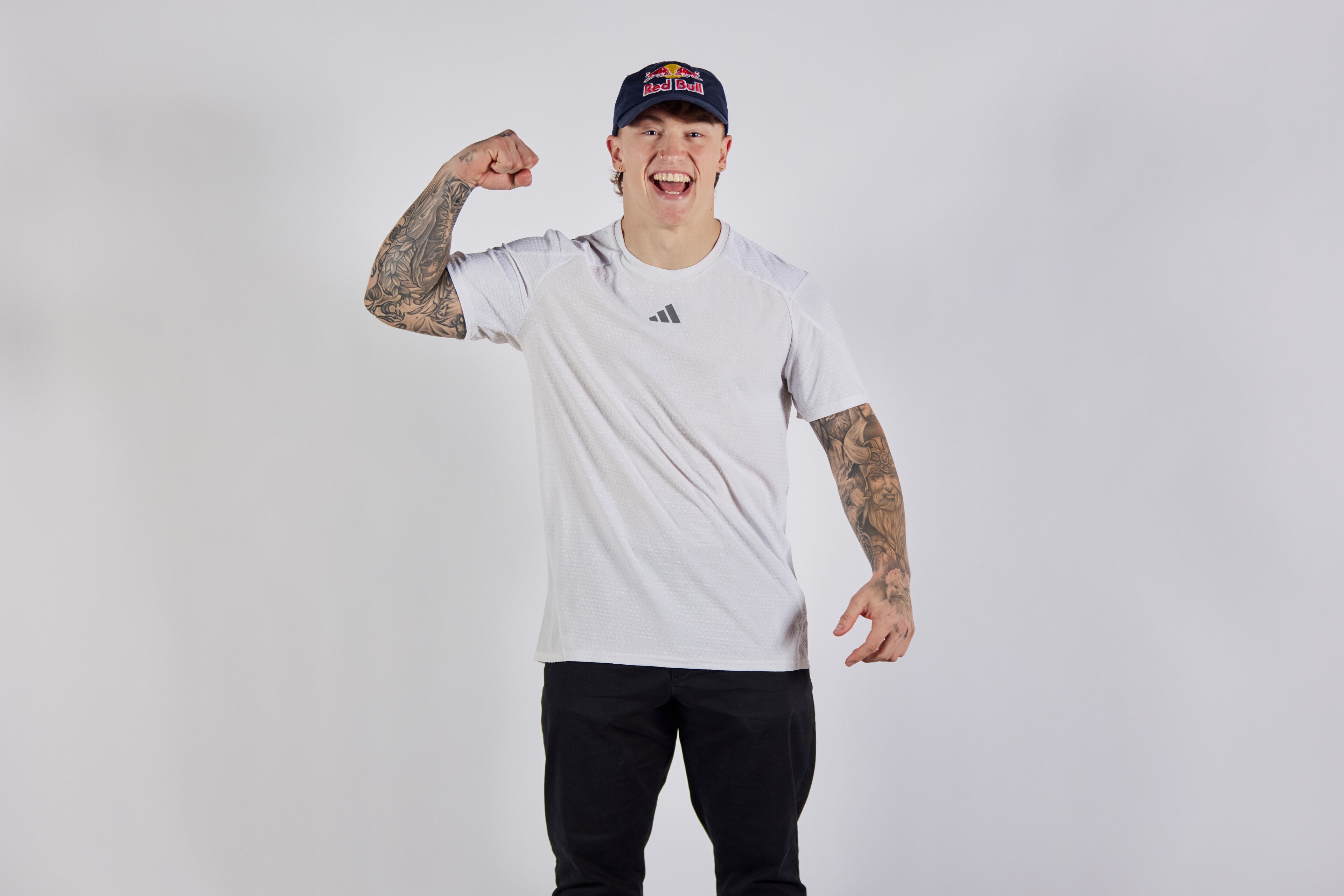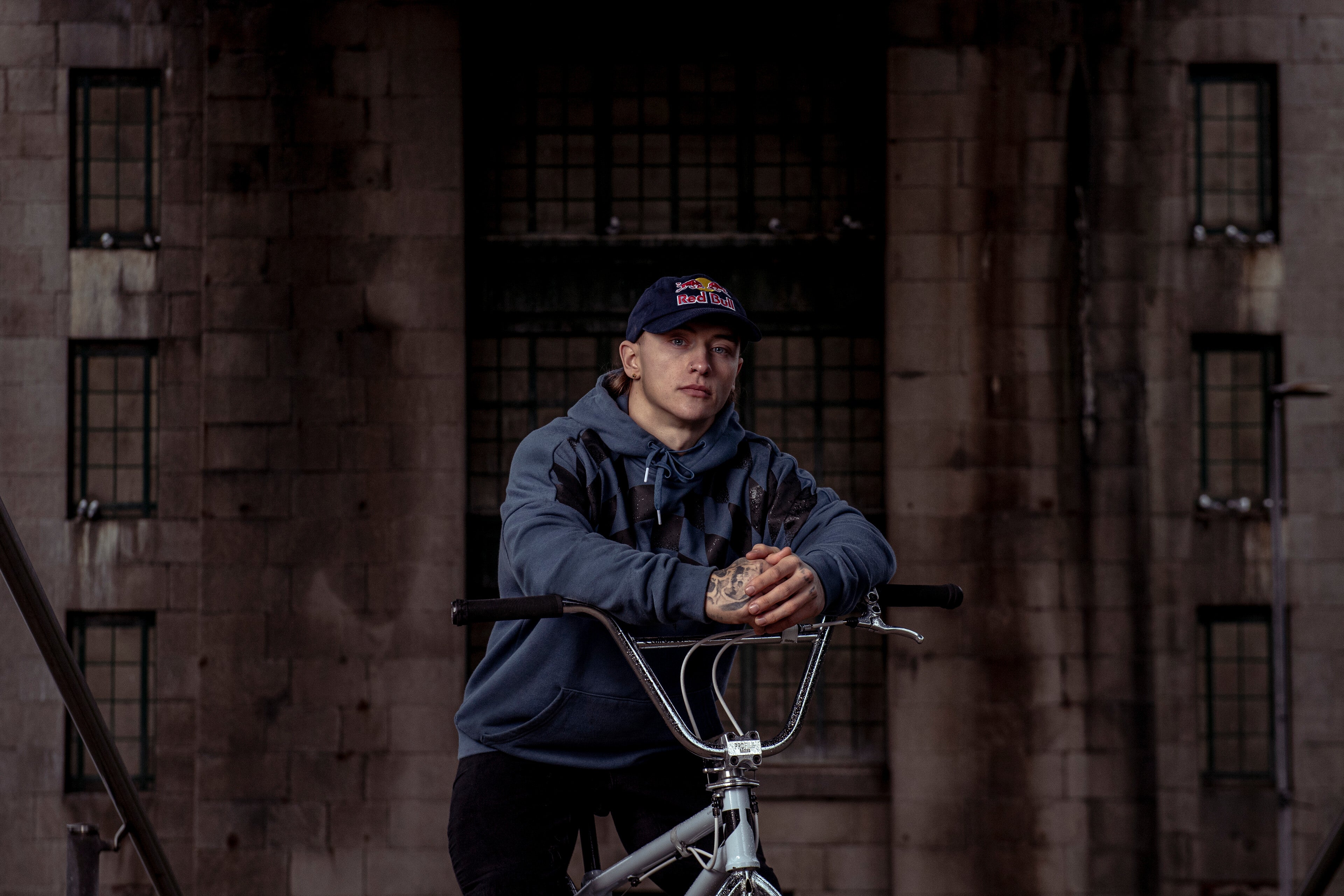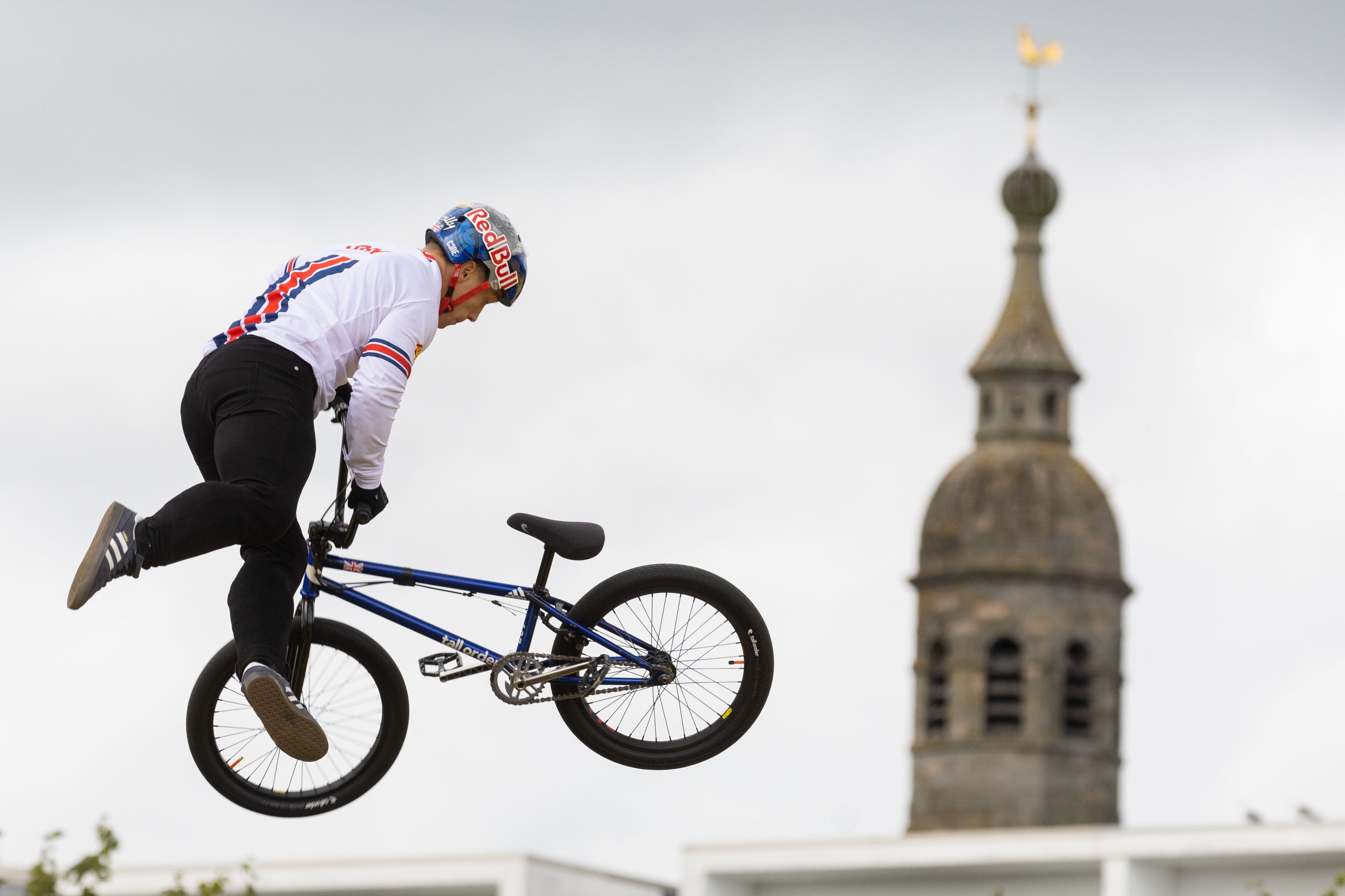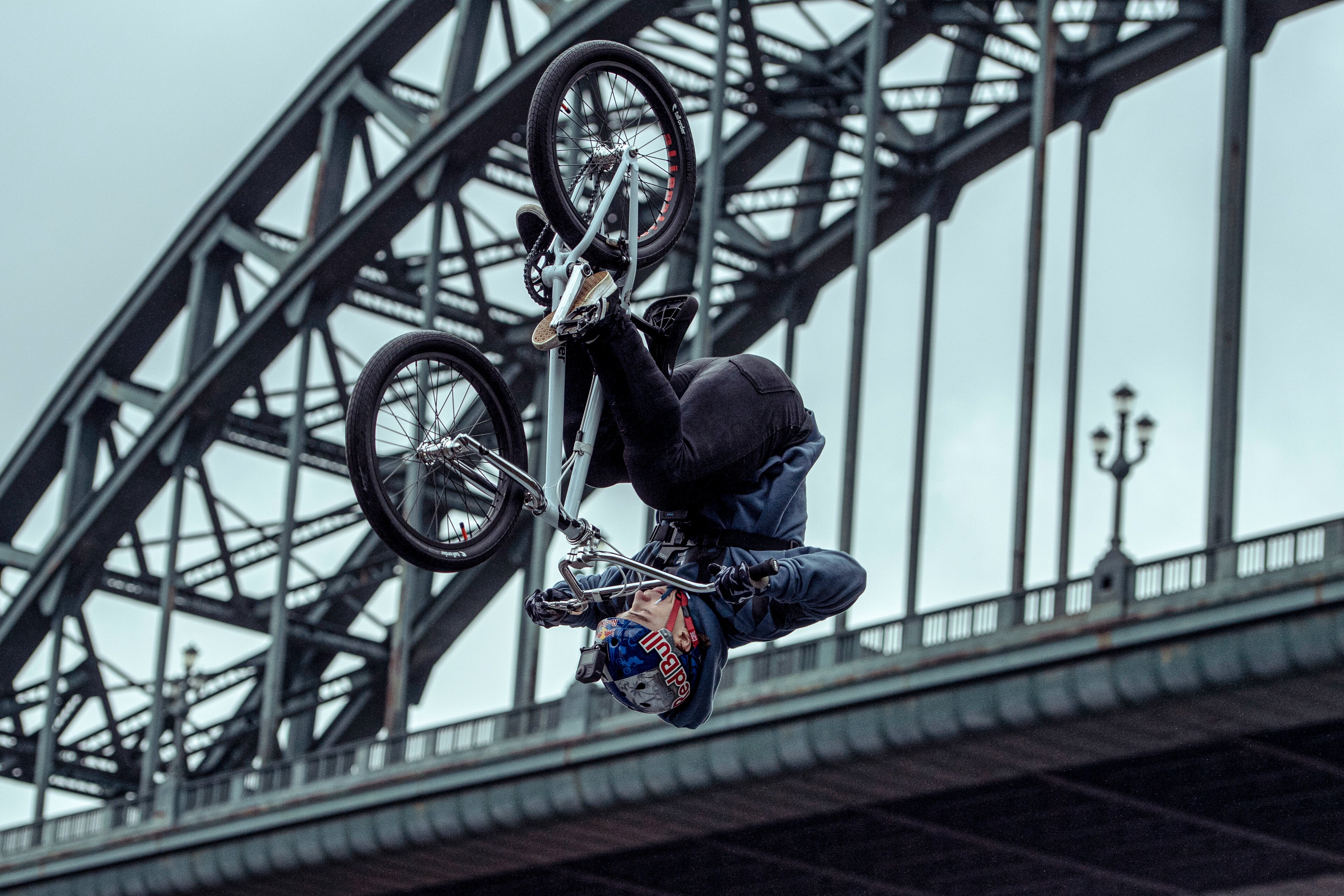
When he was nine years old, a persistent Kieran Reilly persuaded his parents to buy him a BMX bike. It wound up being one of the best-used gifts ever given.
Growing up, the now 23-year-old, would get home from school, grab his BMX and go straight to the skatepark opposite his parents’ house in Gateshead.
“My parents loved it,” he laughs. “There weren’t many lads at the skatepark who wore a helmet, and if they did they wore black, so if my parents could look outside and see my white helmet then they knew I was fine.”
Going pro was always the goal, but that dream appeared to be dead in the water when he left school. Would-be sponsors remained silent, so he committed to a three-year carpentry apprenticeship, but still spent every spare moment on his bike. Then, in 2020, Red Bull came calling.
In the years since he’s been crowned BMX freestyle European champion, world champion and earned silver at the 2024 Paris Olympic Games, crediting much of his success to a series of changes he made to his workouts and lifestyle in 2022. Below, he reveals the nature of these tweaks, and how they took him from a talented athlete to the top of his sport.
Time on the bike
One thing has remained constant in Reilly’s training: time on the bike, and lots of it.
“I usually ride five times a week,” he says. “If you get in [to the skatepark] and there aren’t many people there, you usually get your stuff done quickly, so that could be an hour and a half. If there’s a bigger crew and you have a really good session that day, it could end up being three or four hours.
“It’s a social thing too. You’ll get into a session together where you take turns going in. There’s no specific programme or anything like that, it’s whatever you want to do that day, but if you want to be consistent for competition then a lot of it is repetition of tricks.”
In BMX freestyle (park) competitions, riders have a couple of minute-long “runs” to impress judges. Each run is scored out of 100 based on factors such as variety of tricks, number of tricks, height, creativity and originality.
“In the lead-up to a competition, I do a lot of 60-second competition runs; for fitness, but also for building confidence in doing certain tricks under fatigue,” says Reilly. “Primarily, it’s just repetition of tricks. You’re trying to learn new things.”
Read more: I tried Alex Yee’s running workout and it humbled me in just 40 minutes

Stronger body, stronger performances
In 2022, Reilly introduced something new to his training, which he says transformed his performance.
“I decided I needed to start going to the gym,” he says. “I wasn’t working on that side of my performance before. I thought just spending an extra hour on the bike was the same as going to the gym, but it’s very much not.”
His training method of choice was CrossFit – a class-based training method blending high-intensity workouts, conditioning, strength training, gymnastics and Olympic weightlifting. A quick search of his name on the CrossFit website shows he’s incredibly good at it too, finishing in the top three per cent of entrants to the CrossFit Open (an annual, online global fitness competition with more than 340,000 participants last year).
At ShireFit in Corby, he found an “amazing community” who made going to the gym feel “more like a hobby” than a chore, and he still does two or three classes each week alongside other gym work. This has had a direct impact on his performance, Reilly reckons.
“Joining the gym and starting to train went hand in hand with the best results I’ve ever had [in BMX competitions]. I work a lot on grip and quad endurance. It meant that in the final 30 seconds of a competition run, I wasn’t fading out. I was still able to do big tricks.”
He also found that packing on muscle protected his body from the falls he inevitably faced in his line of work.
“There have been a lot of crashes, and there will be a lot more, but my body is now better prepared for them,” he says. “I now have quite a lot of muscle mass, and that definitely takes impact better than if I didn’t. My body is created for impact at this point.”
Read more: Why going sober was one of the best things I’ve ever done

Kieran Reilly’s go-to workout for an iron grip
In 12 minutes, complete as many repetitions as possible (AMRAP) of the sequence below:
Exercise |
Repetitions |
SkiErg |
20 calories |
Toes-to-bar |
12 |
Power clean (60kg) |
6 |
Ideally, you would perform this workout as written to achieve the desired stimulus – testing and developing your grip endurance. However, there are tweaks you can use to make it more accessible.
For example, you can scale the weight of the power clean if 60kg feels too heavy, or use dumbbells instead of a barbell. If you don’t have access to some of the equipment, the SkiErg can be substituted for any exercise machine or a 200m run. The toes-to-bar (a CrossFit staple which involves hanging from a pull-up bar and repeatedly bringing your toes up to touch it) can be swapped for V-ups. These changes won’t work your grip, but they will serve up a 12-minute workout that tests your heart, lungs and core.
Read more: ‘This will change your life’ – An expert strength coach shares the training method missing from your workouts
If you do hard things, they become easier
I always like asking elite athletes for their favourite workout, and I loved Reilly’s response. He immediately whipped out his phone and started scrolling.
“I have a bunch in my notes that I always retest,” he says. “You know what they say; if you do hard things, they become easier. I love the feeling of finishing a really hard workout for the first time, compared with retesting it for the 10th time. My score will have changed, but I can also recognise improvements I’ve made physically and mentally. That translates into life, and into riding. If I reach a hard spot with a trick, I know I have the ability to push past it.”
The workout he settles on is the CrossFit-style circuit above, which is designed to test the grip. Completing six rounds or above in the 12 minutes given represents “very good going”, he says.
“Grip and quad endurance are the two most important things for me, physically,” Reilly explains. “Grip is a big thing because of how much time you spend with your feet off the bike in a 60-second competition run. When you’re doing tricks with your feet off the bike, you’re gripping the bars incredibly tightly, so the risk rises as your grip tires. If you have good grip endurance, then by the end of the run you can still grip and control the bike well.”
Read more: Forget the gym – build full-body strength anywhere with this trainer-approved kettlebell workout instead

The world’s most overlooked recovery tool
You’ll be happy to hear that Reilly’s go-to recovery tool won’t set you back thousands of pounds. In fact, it’s free.
“Sleep is a massive thing for me, but it’s something I neglected for a long time,” he says. “I thought it wasn’t a big deal, and if I focused on everything else it would be fine. But since improving it, the difference in my energy levels, recovery and performance has been massive.”
Since overhauling his approach in 2022, he now aims for at least nine hours per night, and the latest you’ll catch him nodding off is 11pm.
“Whether I’m tired or not, when it gets to a certain time, I’m going to sleep,” says Reilly. “Nine times out of 10, even if I don’t feel tired, I will get to sleep.
“I try not to eat a couple of hours before bed, stay off my phone, and make sure I’m hydrated so I’m not drinking a bunch before I go to sleep. My girlfriend hates it because I also try to have minimal light in the house as soon as it gets to the evening – I’d rather walk around with my phone torch out than switch a light on. I’m trying my best to get into that sleep mode.”
His other regular recovery tool is a weekly trip to the physio – “I’m in maybe once a week, just to get what I call an MOT.”
Read more: A flexibility expert says these are the three best stretches for fighting tight hips
Reilly’s diet isn’t a series of numerical calorie and macronutrient goals. Instead, he aims to eat nutritious foods that support his intense training schedule.
What I eat today decides how I’m going to feel tomorrow
“The biggest focus is on eating high protein foods and a lot of carbs, because of the amount of training I do,” he says. “I also eat by a rough 90:10 rule; 90 per cent of what I eat is really clean food, then 10 per cent is eating less nutritious things I like in moderation.
“Before I was quite naive, so I didn’t know that what I was eating would make me feel a certain way. Now diet’s a big thing for me – I always find that what I eat today decides how I’m going to feel tomorrow.”
Read more: This is how much protein you need each day, according to a nutritionist

Mindset matters
My stand-out moment from the 2024 Olympics was Reilly chucking his bike across the Paris skatepark as he celebrated nailing his final 60-second run. He was the last rider, the stakes were sky high, yet still, he pulled a minute of brilliance out of his back pocket to secure a silver medal.
Physically, this is a huge ask, but dealing with that amount of pressure mentally is incomprehensible for most. Luckily, he has a few mindset tricks up his sleeve to deal with such situations.
“We work with a sports psychologist at British Cycling, and we work in-depth on a lot of things,” Reilly says. “Something that really helped me was knowing that the reason I’m doing this is for me.
“The only person who can be genuinely happy or frustrated with my result is myself, so what’s the worst that’s going to happen? That I’m upset with myself. That’s not really that big of a deal when you think about it, long-term. That was a good way for me to take the pressure off.”
Recipe for success
Reilly has concocted a recipe for success in recent years. He’s built a more resilient body through regular training, a nutritious and sustainable approach to nutrition, and enough shut-eye each night to support his demanding routine.
His training time at the skatepark and penchant for CrossFit fill a social purpose as well as a sporting one, while his parents remain his “biggest fans” – “my dad would drive me to every amateur competition that was going on in the UK”.
And finally, he has developed an iron mindset capable of dealing with pressure on the world stage, all while coming across as amicably humble and down to earth in our 40-minute chat.
The sum of these parts? I’d wager he’s in for a very exciting 2025.
Read more: I tried ‘the best kettlebell workout’, and it was surprisingly simple yet effective in just 10 minutes







